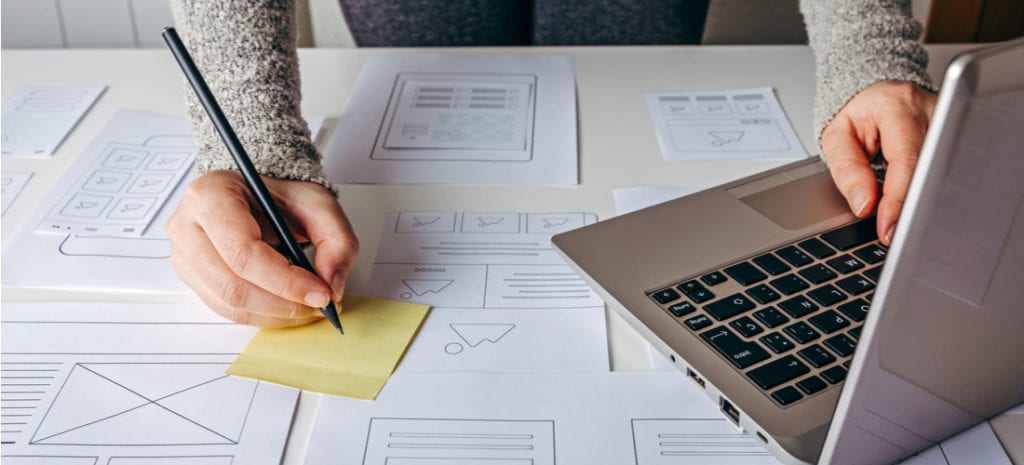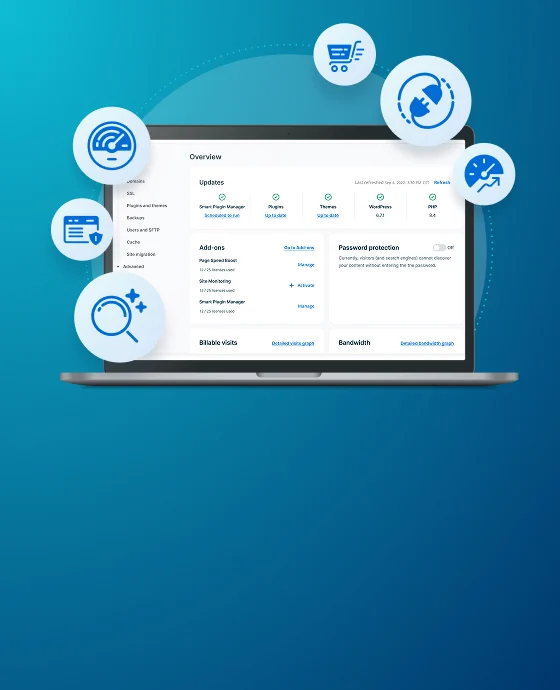
Web Design for WordPress: Tips and Best Practices
Web design covers a lot more than just aesthetic considerations. When planning out your website’s design, you need to take a lot of factors into consideration, including ease-of-use, navigation, search engine optimization, and branding.
If you pay attention to all of those elements, you’ll end up with a WordPress website design that’s not only a pleasure to look at, but also to use. That last part is essential, because usability is a deciding factor when it comes to keeping visitors engaged and coming back to your site.
In this article, we’ll introduce you to several tips for WordPress design, along with best practices for you to keep in mind the next time you’re working on a new website design with WordPress. Let’s get to work!
What are web design best practices?
Every website is unique in its design and functionality. However, there are a lot of web development best practices that can help you design sites that look and work much better than most of what you see online. These practices apply to all types of projects, and internalizing them will help you create better websites.
In a nutshell, these are the factors you’ll need to keep in mind to make sure your website doesn’t only look good, but also serves visitors effectively:
- Visual layout and branding: Your site’s layout should be designed to lead users to the content they want to see. Throughout, you can also use branding elements to create a coherent style for each web page, and even a blog post.
- User experience: The user experience encompasses everything visitors do on your website, and helps to determine how positive their interactions are. Design plays a significant role in helping you create websites that are a pleasure to use.
- Ease of use: Ideally, visitors should never feel at a loss when it comes to how to interact with your website or find what they’re looking for. That’s something you can accomplish by understanding who your audience is, and designing with their needs in mind.
These are all high-level concepts that are easy to understand, but not as simple to put into practice. With that in mind, let’s move on to some actionable tips you can use to elevate your WordPress site’s design.
Web design with WordPress: best practices
Websites need to be aesthetically pleasing. However, it’s also important to think of your site’s layout as an element you can use to increase accessibility. Some techniques that can help you achieve that include:
- Symmetry: The more symmetrical your website’s layout is, the better it will look across a broad variety of devices, regardless of their size.
- White space: Proper use of white or negative space can make your website feel less cluttered, and helps you highlight the elements or content you want to lead users towards.
- Contrast: You can use color and contrast to further highlight critical elements, such as Calls to Action (CTAs) and individual sections.
- Typography: Text is the primary way through which we interact with the web, so your choice of fonts is critical for a strong user experience. The easier the fonts are to read, the better the experience will typically be.
Those elements are the fundamentals of accessible website layout design. However, there are plenty of other web design standards and best practices to explore, so let’s look at a few of those as well.
Navigation menus shouldn’t be hard to use or understand. As a rule of thumb, you want to minimize the number of elements on your menu, so everything is as easy to find as possible.
The only exception to that rule is if you’re running a highly-complex website, such as a large online store. In that case, a ‘mega’ menu can provide enough value to justify its bigger footprint.
Be as descriptive as possible
Although it’s important to keep your navigation menu short and sweet, that accessibility shouldn’t come at the cost of a lack of information. Ideally, visitors should know precisely where each link will lead them at a quick glance.
With most menus, you’ll want to shorten each link to one or two words at most. For example, including an About or About Us link gets the point across perfectly. Other common menu items include Shop, Contact Us, and so on.
Include a search bar
Unless you’re designing a one-page website, it makes sense to include a search bar. It’s an element that doesn’t take up much space, and it adds a huge amount of functionality to your website.
One mistake a lot of designers make is failing to look for ways to make their search bars stand out visually. Something as simple as trying different colors for your Search button can help make the element pop and add some flair to your pages.
5 web design tips for WordPress
Great web design goes well beyond optimizing your pages’ layout. There are several other considerations you want to keep in mind. In this section, we’ll break down five essential web design tips.
1. Establish brand design standards
Your website needs to reflect your brand’s style, and that includes colors, the fonts you use, and even the message you project. Those are what we call ‘brand elements’, and they help visitors associate content with your site or business.
Consider logos, for example. You can probably recognize dozens of companies by their logos alone, because they make sure to include them throughout their entire online presence. It’s important to create a clear and consistent brand identity, which includes all the elements you’ll reuse across sites, social media profiles, and more.
2. Optimize your WordPress site for speed
It doesn’t matter that your website looks amazing if it takes too long to load. Users these days are highly demanding, and you’re likely to see sharp increases in bounce rate if your website takes over two seconds to load.
A trap some users fall into is packing too many elements into their pages. That might include high-quality images with massive file sizes, or video backgrounds that take too long to load.
It’s important to understand that you don’t need to sacrifice visual quality to have a fast website. Rather, it’s important to look for ways to optimize WordPress and minimize the size of your site’s assets. That way, you can deliver the best user experience possible while keeping things looking fresh.
3. Ensure that you have a responsive design
Most people interact with the web primarily through mobile devices. That means you need to design your website with a mobile-first perspective. If it looks great on a large screen, but isn’t very appealing on a smartphone, then your website isn’t responsive.
With WordPress, ensuring that your website is mobile-ready isn’t as difficult as with other Content Management Systems (CMSs). For starters, you’ll want to make sure you use a theme that looks great on mobile devices.
There’s also a broad range of plugins you can use to increase your website’s responsiveness, most of which focus on providing a better menu experience. If a website works perfectly on mobile devices, it should be a breeze to navigate on a full-sized screen, so the effort you put in here pays off in spades.
4. Make your content easy to find
Strong web design is about providing a better experience for your users, through both style and usability. A large part of that involves using design to highlight the content users want to find.
There are a lot of ways you can go about accomplishing this goal, including:
- Making sure your menus are easy to use
- Taking advantage of contrast and white space to highlight key sections
- Not burying important content or elements where users might miss them
It’s important to understand that a lot of users won’t spend time poring over every pixel on your website. In fact, studies show that most visitors skim through websites, which is precisely why a lot of the advice we’ve gone over focuses on making key elements stand out visually.
5. Use easy-to-read fonts
You can use any font you want on your website. However, not all fonts are equally readable, which is critical from a web design standpoint.
For your website’s content, we recommend sticking to classical, safe choices such as Arial, Georgia, Trebuchet, and Verdana. The default fonts that WordPress uses are all great choices for publishing highly-readable content. However, the CMS also enables you to use third-party fonts if you want to spice things up.
The good thing about WordPress is that because it is user-friendly, you can design an optimized site yourself. Just make sure to check out some WordPress tutorials on web development and design.
Embark on your web design journey with WP Engine and WordPress
Your website’s appearance can play a significant role in how likely visitors are to engage with its content. Of course, design isn’t the only thing that can help you “hook” visitors and keep them coming back.
For that to happen, your website needs to be blazing fast as well. With WP Engine, you can get access to high-quality hosting for WordPress sites and the resources you need to design an incredible digital experience for your visitors!


